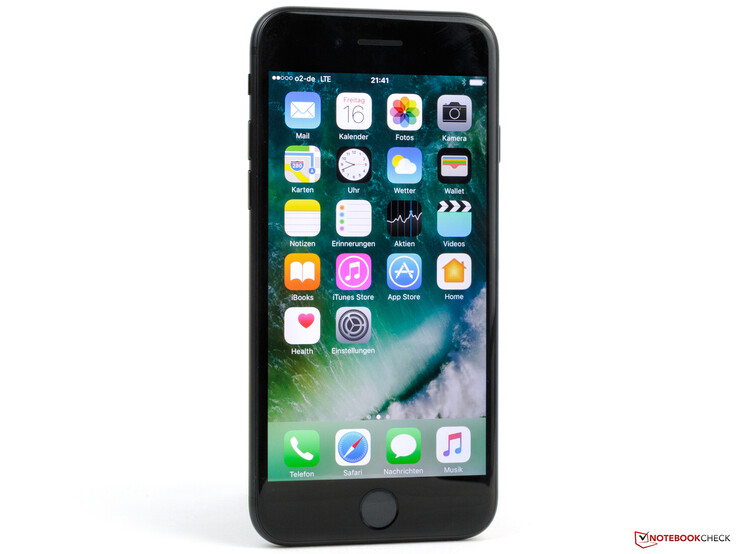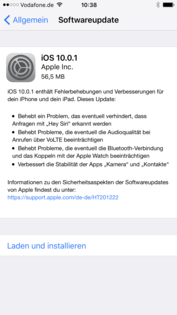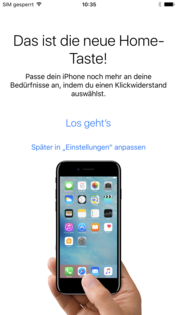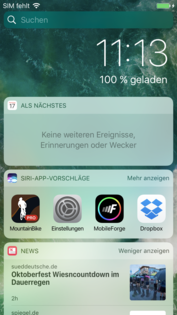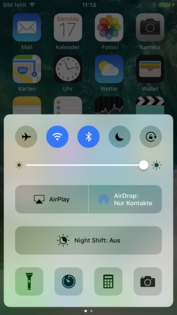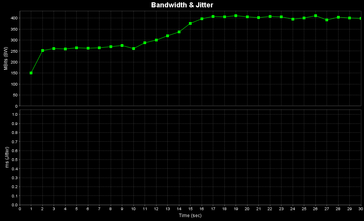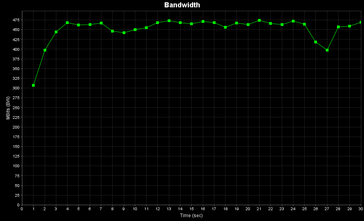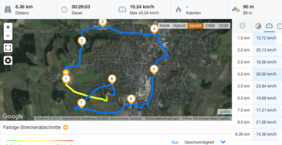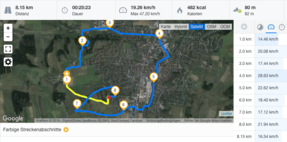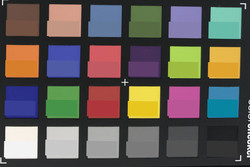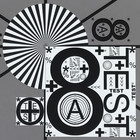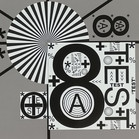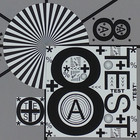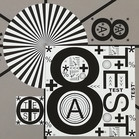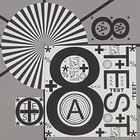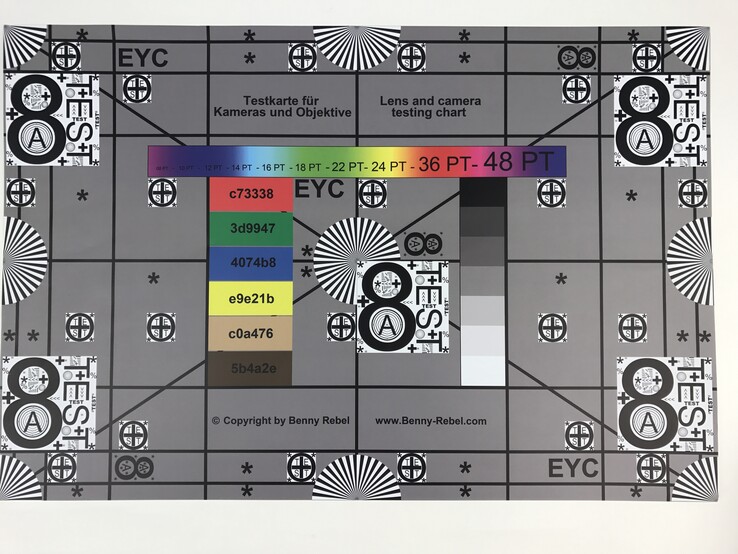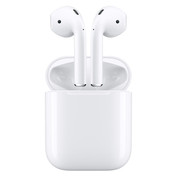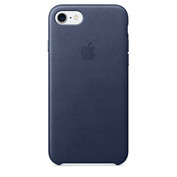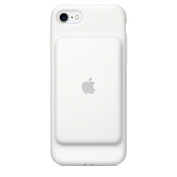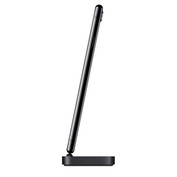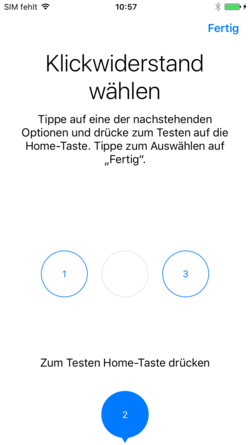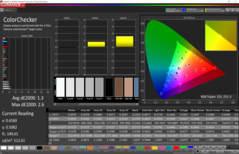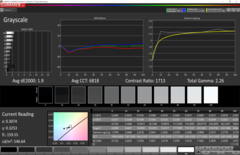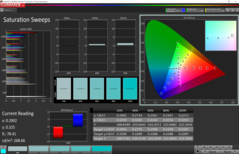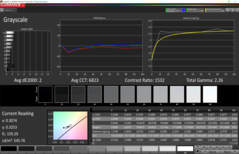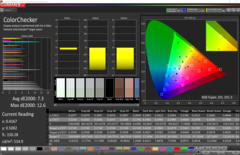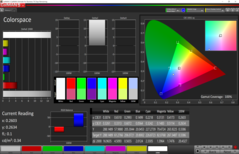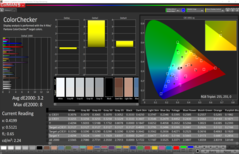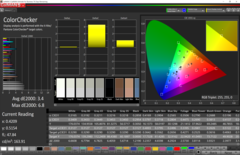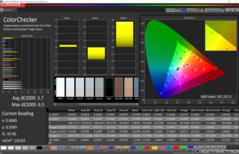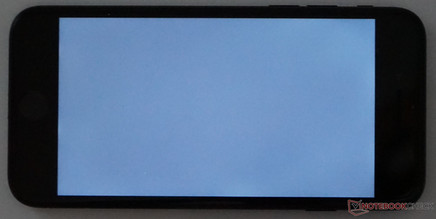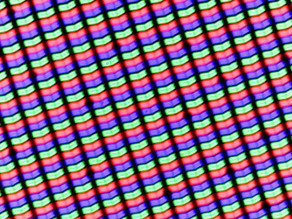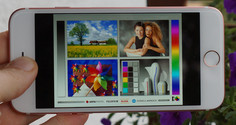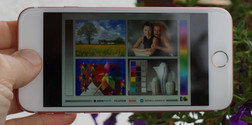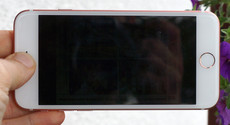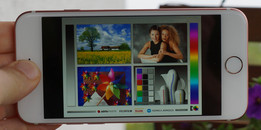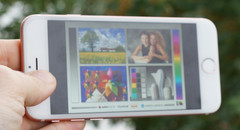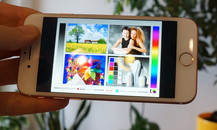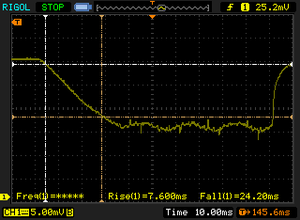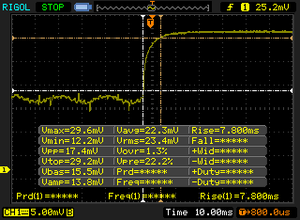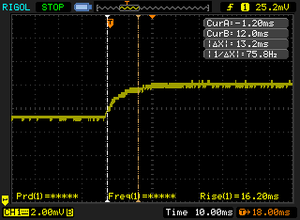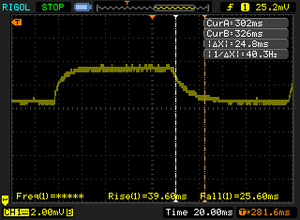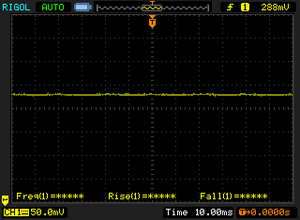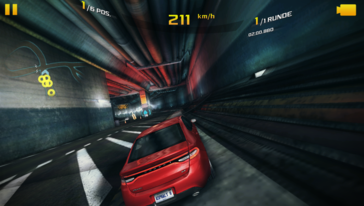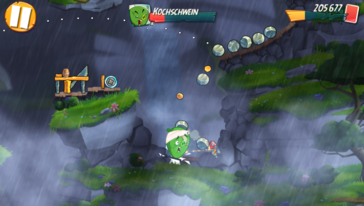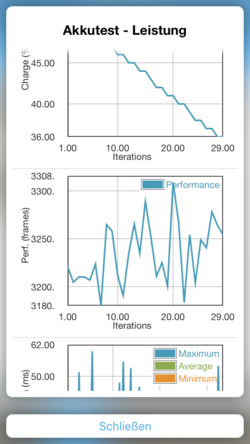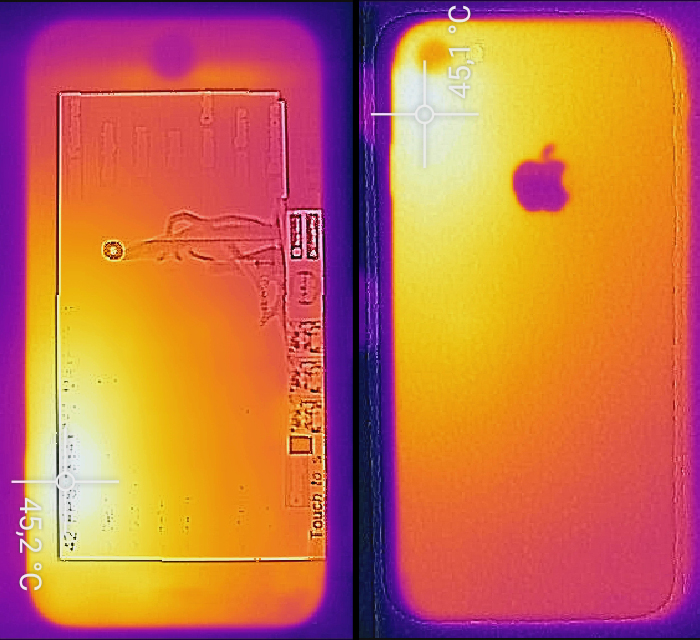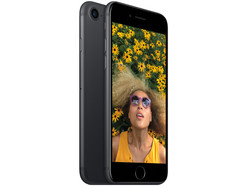Apple iPhone 7 Smartphone Review

For the original German review, see here.
Apple announced its latest generation of flagship smartphones on September 7th. There were not many surprises; the rumors ahead of the keynote have worked well for many years. A couple of days ahead of the event, there were still some uncertainties how many models Apple would actually announce. Would we get a third iPhone with the addition Pro? In the end, Apple met the expectations of most people: Two new devices with almost identical cases compared to the previous generation. The designations: iPhone 7 and iPhone 7 Plus. Does not sound spectacular? Not at first, but Apple still came up with some new ideas for its flagship models. We will cover all sections comprehensively over the course of the article, so we will only give you a brief summary at this point.
The Apple iPhone 7 Plus now has two cameras with different focal lengths, one wide angle lens and one telephoto lens. This means pictures with the smaller angle can be taken without digital losses – at least with a 2x zoom. Apple also implements its latest chip generation A10 Fusion, which is once again supposed to be much faster than the old generations. Apple also says there are improvements for the cameras as well as the display. Phil Schiller promised higher luminance and wider color gamut during the keynote. We also get stereo speakers and a chassis with protection against water and dust. The Home button is not a mechanical button anymore, but it is now a pressure and touch sensitive surface instead. There are also two new colors: Black as well as Jet Black with a glossy finish, which is also the color of our review unit. By the way: Apple also waived something. The analog headphone jack is gone and the sound output is now handled by the Lightning port.
Case
The design of the latest iPhone generation did not really change. The shape is identical, and the same applies for the material. Despite the identical dimensions, however, the new model is a bit lighter – down from 143 grams (iPhone 6S) to 138 grams. So that's it? Not at all. As expected, Apple introduces more new features than just one or two new colors with a new model number. The first visible change is the lack of the analog 3.5 mm headphone jack. Audio signals from the Apple iPhone 7 can therefore only be transmitted digitally; either via Bluetooth or Apple's own Lightning port. The iPhones with the number 7 are therefore shipped with Lightning EarPods.
But you do not have to worry: Apple also thought about all those users who already invested money in a decent pair of headphones with a stereo jack and includes an adapter from Lightning to 3.5 mm. This means another adapter, which will primarily make Apple and manufacturers of accessories happy. A simple example: If you charge your iPhone 7, you cannot listen to music via wired headphones at the same time…unless you get an adapter. Belkin, for example, already announced a Lightning audio and charging adapter. The RockStar will retail for a hefty 40 Euros (~$44). According to Apple, the lack of the stereo jack is not only for economic reasons; the manufacturer also needed the space inside for new technologies for the camera, SoC, and the battery. The reworked Taptic Engine for the new Force Touch home button also need more space than before. Another new feature most likely favored the lack of the analog stereo jack.
The latest iPhone generation is protected against water and dust according to Apple. What does this mean? For the first time Apple took measures to protect its smartphone against accidental submersion. The predecessors survived this as well with a little luck, but the new devices are certified for the first time. The protection class is IP67, so the number 7 iPhones must withstand up to 30 minutes at a maximum water depth of 1 meter. This does not apply for any other fluids than water and not for "abnormal" temperatures. Apple does not, however, explicitly speak about water resistance. The manufacturer also says that damages to the chassis and the common aging process can affect the protection against water even during the warranty period. Also: A wet iPhone must not be charged according to Apple. By the way: Dust must not get into the chassis at all according to IP67.
Finally, we want to talk about the two formerly mentioned new colors. Apple waives Space Gray and introduces two new shades of black. Jet Black is a super glossy finish, which is manufactured in a very complex process consisting of multiple steps of anodization and grinding. The manufacturer still recommends using a cover due to the scratch-sensitive surface. We will add information as soon as we have spent some time with the Jet Black model. The sensitivity to scratches seems to be true. Journalists already reported visible scratches after the hands-on after Apple's keynote. The normal black model with a matte finish should be much more robust in this respect. We will know more in a couple of days. We definitely think black leaves a much more sophisticated impression than the old Space Gray model.
Connectivity
Apple now makes the Lightning connector on the iPhone 7 the universal port for all tasks, because the 3.5 mm headphone jack was removed. This means there is only one physical connector at the case of the iPhone 7, the Lightning connector in the center of the bottom edge.
Apple did not increase the amount of memory and we still get 2 GB. There are, however, new storage options: 16 GB is not available on the iPhone 7, 32 GB is the entry-level capacity from now on. Apple sells this model for 649 Euros (~$728). The next model in line comes with a steep jump, both for the price as well as the storage capacity: the 128 GB iPhone 7 costs 749 Euros (~$841). The new maximum capacity of the iPhone 7 with 256 GB is available for 849 Euros (~$953). A microSD-port is still not included in Apple's concept.
The fingerprint scanner TouchID is still implemented into the Home button. You can decide whether you want to use it, but alternative biometric login methods like retinal scan or the like are not available.
NFC is implemented but can only be used for Apple Pay, which is still not available in all regions. Also included is iBeacon, Apple's technology for navigating indoors.
The sensor equipment of the iPhone 7 offers everything you could ask for: Accelerometer, proximity and ambient light sensor, 3-axis gyroscope, barometer and digital compass are available. There is no special heart-rate monitor like we know from some Samsung Galaxy models, for example, but some apps can measure the heart rate via LED flash and camera at the back.
Software
New iPhone generations are (almost) always combined with new iOS versions. This is also true this time, and Apple provided version 10 of its mobile operating system a couple of days ahead of the launch of the iPhone 7. Users of the iPhone 4S or older and users of the iPad 3 or older cannot use the latest iOS version. The iPod has to be at least from the 6th generation. All others can update from September 13th and get a whole bunch of new features.
Many of the new features are not directly visible or do not add new functionality. Apple wants to improve the battery runtime by letting background apps only be updated when the device is being charged, for example. The voice assistant Siri is supposed to be improved as well. The guys from Cupertino seem to be so convinced by Siri that third-party developers can now get access via apps as well. The deletion of preloaded system apps does, contrary to some rumors, work. Mail, Calendar etc. can be deleted and restored via App Store if necessary. Saved data and mails will be lost when you delete the apps.
The first thing you will notice, and what long-term Apple users will have to get used to, is the lack of the unlock slider. Instead, you can now use the Home button to unlock the smartphone. If you still swipe when the device is locked, you will see a quick overview about upcoming calendar events, new messages, weather and the like. A swipe to the left launches the camera. Another new feature is that the screen is activated when you lift the iPhone and not only after you have pressed the Home or the Power button.
Apple also put a lot of work in the Messages app. Besides numerous new emojis, you can now use full-screen animations as well within the app. Videos can now be played directly within the app, too.
Completely new with iOS 10 is the app "Home", so Apple finally includes the long awaited Smart-Home solution HomeKit, which allows the control of compatible devices. Siri is once again important here.
Apple also closed some security gaps with the update of iOS 10; we summarized them in this news article.
Some users had problems with "bricked" iPhones and iPads as well as data loss immediately after the release of the update. Apple says it has fixed the problems by now. Affected devices can be restored via iTunes. We did not experience any issues. We did, however, notice that an iPhone 6s had a much shorter battery runtime after the update. Right now, the idling smartphone loses about 40% of the battery charge overnight, which was not the case before the update. We will keep an eye on it.
Our iPhone 7 showed an update to iOS 10.0.1 immediately after we turned it on. It solves some issues with Siri, the camera and the Contacts app according to Apple. The Bluetooth connection to the Apple Watch is supposed to be more stable and the audio quality via Voice-over-LTE was improved in some cases as well.
Even more information about new iOS 10 features is available in the review of the iPhone 7 Plus.
Communication and GPS
Apple upgraded the communication module of the iPhone 7. Our colleagues from iFixit found out that the Qualcomm modem MDM9645M handles the communication. This is actually an LTE Cat. 12 module, but the released specs suggest it only works according to the LTE Cat. 9 standard due to the maximum download speed of up to 450 MB/s. This is, however, only the case for the models in the U.S., Japan and China. European models are equipped with the modem Intel XMM7360, which is supposed to be a bit slower according to the colleagues from Cellular Insights. Apple does not make any compromises in terms of frequencies and supports 23 LTE bands, four of them TDD-LTE bands. The coverage for HSPA+ and GSM networks does not leave anything to be desired, either. Even frequent travelers should get a connection in all parts of the world.
While the Apple iPad Pro 9.7 was equipped with an additional eSIM, we would have expected this from the iPhone 7 as well. But this is not the case; there is only the common slot for a nano-SIM card. This is a bit unfortunate, because the worldwide usability would have been better for some travelers with an eSIM. The signal quality of the iPhone 7 was inconspicuous in the metropolitan O2 and Vodafone networks. We always had a stable LTE connection, even indoors.
Nothing changed compared to the iPhone 6s in respect to the WLAN module. It still supports the common IEEE 802.11 standards a/b/g/n/ac in the 2.4 and 5 GHz networks. It is the first time that we can perform our networking test with our reference router Linksys EA8500 and the iPhone. The transfer rates are pretty high compared to most Android rivals, only Lenovo is better. The data connection is very stable in practice with a distance of about 12 meters from the router and through one wall, and the signal quality can still be called very good. Websites opened quickly in the browser. However, the smaller model is a bit slower than the iPhone 7 Plus in a direct comparison.
| Networking | |
| iperf Server (receive) TCP 1 m | |
| Lenovo Moto Z | |
| Apple iPhone 7 | |
| Samsung Galaxy S7 Edge | |
| OnePlus 3 | |
| Huawei P9 | |
| iperf Client (transmit) TCP 1 m | |
| Lenovo Moto Z | |
| Apple iPhone 7 | |
| Samsung Galaxy S7 Edge | |
| OnePlus 3 | |
| Huawei P9 | |
So far, the iPhone generations performed very well in our GPS tests. The devices recorded the tracks very reliably, the initial satellite fix was fast, and the signal quality was still excellent even in bad weather conditions or in the forest. We can confirm the last two aspects for the new Apple iPhone 7 as well. The comparison ride with a bicycle did, however, show that the current Apple flagship is even a bit too accurate. The track length is even longer compared to our special navigation device Garmin Edge 500 that we use a s a reference device. This fact could be the result of a higher accuracy compared to the bicycle navigation device. A closer look at the recorded track, however, reveals some passages we did not actually ride on. This is particularly visible in the forest section. We cannot really explain this phenomenon, but it suggests that the GPS module of the Apple iPhone 7 can be disturbed by something. Maybe the overcast sky and the dense forest were just too much.
Telephone and Voice Quality
Similar to the iPhone 7 Plus, the voice quality cannot really convince when we consider Apple's premium claim. There is a constant quiet murmur from the earpiece and the sound was a bit tinny. The noise suppression could work better as well. Our call partner complained about occasional dropouts, but this might have been caused by the network as well, because it did not happen during other test calls. The microphone tends to distort at higher volumes and also carries a quiet static. The sound does not generally appear to be very natural.
If you use the speaker for calls, the performance is typical for a smartphone and the sound is pretty tinny. The sensitivity on the other hand is good, so it is no problem to put the iPhone on a table as long as the environment is not too loud.
The Phone app was optimized as well, and we listed them in the review of the iPhone 7 Plus.
Cameras
Finally, a higher resolution for selfie enthusiasts is probably what some people thought when they heard about the new 7 MP front camera (3088x2320 pixels). The small sensor does actually take good pictures and controls the exposure via facial and body recognition. An HDR automatic is also available once again. The aperture f/2.2 is generally okay but cannot compete with the current Samsung flagships (all f/1.7). You can see the difference in a direct comparison. Pictures taken with the Galaxy devices appear sharper and the colors are richer, despite the lower resolution. Compared to the previous iPhone 6s, the additional pixels are hardly noticeable, but the new sensor can now also record videos in Full HD (1920x1080 pixels), which does clearly improve the quality of the recordings.
Apple also tinkered quite a lot with the rear-facing camera of the iPhone 7. The number of pixels is still 12 MP, but the manufacturer now uses a smaller aperture at f/1.8. This promises high light sensitivity and is supposed to improve the quality in dark environments. Unfortunately, Apple does not specify the pixel size, but the smaller iPhone model is now also equipped with optical image stabilization. From a technological standpoint, Apple does catch up with the biggest rival Samsung, but the Galaxy S7 (f/1.7, 1.4 µm pixels) and the like are equipped with more powerful components.
The difference is also noticeable in practice. We want to mention right away that the cameras are on a very similar level, but Samsung often has the edge in many cases. All sensors take good pictures in daylight and can handle different lighting situations very well. The apple picture (scene 1) does, however, show that the camera of the Galaxy Note 7 even has a wider dynamic range. The apples appear a bit richer and with more details, but the iPhone 7 captures the sky in the background better, while the Note 7 shows blooming at some spots. The grass in scene 2 quickly shows the higher sharpness of the Samsung smartphone, and we prefer the slightly warmer white balance, while the iPhone 7 is much cooler. The pictures of the Huawei P9 are sharper than the Apple as well but have a lower dynamic range. The P9 offers very intense warm colors and almost appears a bit artistic, but it is also very vivid in return.
The deck is reshuffled in the night shots (scene 3), but Samsung is still slightly ahead. The sensor from the Koreans just captures more light and details, but Apple has clearly improved since the iPhone 6s. Huawei falls behind here, because many details are just swallowed by the dark, and the red hue is too strong.
While the Note 7 and the P9 could perform even better in combination with a tripod and the manual mode, iPhone users do not get this chance with the standard app. This deficit can, however, be fixed with optional apps like ProCamera.
The trigger speed of the iPhone 7 is good when the object is moving but cannot quite keep up with the Note 7, which does not show any serious delay in this case. Noticeably slower is the P9. The autofocus of the iPhone 7 is still pretty fast and quickly adjusts to new lighting conditions.
Nothing changed in terms of video capabilities for the iPhone 7 compared to the predecessor. 720p videos (1280x720 pixels) are captured at up to 240 frames per second, Full HD videos (1920x1080 pixels) either at 30, 60, or 120 frames per second and high-resolution Ultra-HD videos (4K, 3840x2160 pixels) at 30 fps. The visual quality of the recordings is really good and lighting changes are quickly compensated for. Fast movements are no problem for the iPhone, either. Only the sound quality of the microphone was not perfect and you can hear a murmur, especially in quieter environments.
We also had a closer look at the camera performance of the iPhone 7 under controlled lighting conditions. The pictures are not edited afterwards and the white balance is not adjusted, either. We use the ColorChecker Passport for the color accuracy. Contrary to the environment shot (scene 2), the white balance is warmer. Some colors are very natural, like light blue and lavender. Colors with a high percentage of yellow are a bit too pale, earthy tones on the other hand are very rich. Green is a bit pale as well, which can be a result of the camera's P3 color space, which has a smaller green spectrum compared to AdobeRGB, but more shades of red in return. Blue colors are very saturated.
The process is similar with our test chart, which is photographed under identical conditions. We once again immediately notice the slightly too pale yellow areas. The iPhone 7 leaves a good impression in terms of sharpness, and we can only criticize on a high level when we have a closer look. The individual rings in the circle structure within the central eight figure are hard to recognize at all. They are much easier to see on the picture from the Note 7, while this is only the case for the black-white sensor of the P9, whereas the RGB sensor is not as sharp. The LG G5 and the OnePlus 3 are also sharper than the iPhone 7 in the center.
Accessories and Warranty
There will be once again countless accessories for the Apple iPhone 7. In the past, there was basically an accessory for almost every situation: Whether the iPhone learned to fly a drone, was submerged in a waterproof case or was being used as a movie camera in a steady camera mount. There is almost nothing for the iPhone 7 that does not exist.
The box of the iPhone 7 already includes some accessories: A 1A power adapter, a 1-meter Lightning-to-USB cable to charge the smartphone or connect it to a Mac or PC, an adapter for Lightning to 3.5 mm headphone jack, to attach a regular pair of headphones as well as a headset. The latter is called EarPods, and it has a Lightning connector as well as a cable with a volume control and a microphone. There are also some service brochures and the SIM tool to open the SIM tray. We also found two Apple stickers and warranty information.
Apple focused on the wireless AirPods during the keynote. They are equipped with a special W1 chip, which is supposed to improve the sound quality and enable better signal quality to Apple devices. The small AirPods also have a microphone, so you can use it for calls. They are supposed to recognize when you take them out of the ear and then just stop the playback, and obviously continue when you put them back in. A double tap activates Siri. The AirPods will retail for 159 Euros (~$178) from late October.
For 45 Euros (~$50), you can get the familiar leather case in seven different colors. Longer battery runtimes are possible with the Smart Battery Case with an additional battery in two colors for 99 Euros (~$111).
The Lightning Dock can be used to charge the iPhone, synchronize it with your Mac or PC and attach speakers via 3.5 mm cable. It retails for 49 Euros (~$55) and is available in five colors.
Apple grants a 12-month warranty for the iPhone 7. It is possible to extend this service to a two-year warranty via AppleCare+, which retails for 129 Euros (~$144) for the iPhone 7. It also covers two accidental damages, although in combination with a fee (29 Euros, ~$32, for screen damage, 99 Euros, ~$111, for any other damage).
Input Devices and Handling
For the first time, the Home button of the new iPhones is not implemented as a mechanical button. It is now a touch-sensitive solid state button, which cannot be depressed anymore. The functionality of the Home button is still the same for the new iPhone 7. This includes single and multiple clicks, holding, tipping etc. The difference is that the user now gets tactile feedback via the new Taptic Engine. The required force can be adjusted in three different settings. We had no problems with the new Home button, but we think it works better when you hold the smartphone in your hand. The handling was a bit trickier when the iPhone 7 was sitting on the table. The new Home button includes the fingerprint scanner called Touch ID. It is again very reliable and quick in the iPhone 7.
We had no problems at all with the touchscreen, which is once again extremely precise and reliable, and the same applies for the carefully implemented case buttons. The mute button was copied by other manufacturers and sometimes even improved (see OnePlus 3). The tactile feedback is a bit more intense in general, which is also the case for the vibration alarm.
Otherwise, there are not any big changes in terms of handling, so we recommend the review of the predecessor for further information. iOS now also enables using two different languages in one message without the auto correct intervening all the time.
Display
Apple says it has also improved the display. According to their own statements, the Retina HD screen of the iPhone 7 is now up to 25% brighter than the predecessor. It is also supposed to cover a wider color gamut. Apple mentions P3, more precisely DCI-P3. This is a common color space for the American movie industry. The wider gamut is supposed to create more vivid colors and therefore improve pictures and videos in particular.
Otherwise, nothing changed. The screen size is still 4.7-inches with a resolution of 1334x750 pixels. The resulting pixel density of 326 PPI is basically the entry into the high-end segment nowadays. Even much more affordable devices like the Sony Xperia X with 441 PPI clearly surpasses the iPhone 7, and we are not even talking about WQHD screens like the ones from the LG G5 (554 PPI) or the Samsung flagships (Galaxy S7: 567 PPI).
Our initial tests with a spectrophotometer reveal good results that we already knew from the predecessors. High color accuracy, good contrast ratios, and no clouding are the highlights. The DCI color space cannot be measured via app, but sRGB is covered completely. The minimum luminance is conveniently low at 2 cd, so you can comfortably read in the dark. Our black test model did not show backlight bleeding and the measured brightness distribution of 90% is very good.
We cannot measure a higher luminance for the Apple iPhone 7 compared to the predecessor. Based on our measurements, the luminance did not really change and the maximum brightness of 556 cd/m² is on par with the 6s. We can still find some improvements for the current Retina HD display. The black value of 0.34 cd/m² is about 10% lower than the old model, which results in a very good contrast ratio of 1635:1. Subjectively, the iPhone 7 convinces with vivid colors and rich blacks. Still, a significant improvement over the Apple iPhone 6s is not visible with the naked eye.
| |||||||||||||||||||||||||
Brightness Distribution: 90 %
Center on Battery: 556 cd/m²
Contrast: 1635:1 (Black: 0.34 cd/m²)
ΔE ColorChecker Calman: 1.3 | ∀{0.5-29.43 Ø4.82}
ΔE Greyscale Calman: 1.9 | ∀{0.09-98 Ø5.1}
100% sRGB (Calman 2D)
99.71% sRGB (Argyll 1.6.3 3D)
63.15% AdobeRGB 1998 (Argyll 1.6.3 3D)
69.1% AdobeRGB 1998 (Argyll 3D)
99.7% sRGB (Argyll 3D)
67.2% Display P3 (Argyll 3D)
Gamma: 2.26
CCT: 6818 K
| Apple iPhone 7 IPS, 1334x750, 4.7" | Apple iPhone 6S IPS, 1334x750, 4.7" | Samsung Galaxy S7 SAMOLED, 2560x1440, 5.1" | HTC 10 Super LCD 5, 2560x1440, 5.2" | Huawei P9 IPS-NEO, JDI, 1920x1080, 5.2" | LG G5 IPS Quantum, 2560x1440, 5.3" | |
|---|---|---|---|---|---|---|
| Screen | -35% | -11% | -50% | -56% | -99% | |
| Brightness middle | 556 | 552 -1% | 350 -37% | 445 -20% | 582 5% | 784 41% |
| Brightness | 519 | 549 6% | 351 -32% | 434 -16% | 563 8% | 774 49% |
| Brightness Distribution | 90 | 87 -3% | 98 9% | 93 3% | 91 1% | 91 1% |
| Black Level * | 0.34 | 0.39 -15% | 0.36 -6% | 0.38 -12% | 0.43 -26% | |
| Contrast | 1635 | 1415 -13% | 1236 -24% | 1532 -6% | 1823 11% | |
| Colorchecker dE 2000 * | 1.3 | 3.4 -162% | 2.04 -57% | 2.8 -115% | 4.4 -238% | 6.5 -400% |
| Colorchecker dE 2000 max. * | 2.6 | 3.25 -25% | 5.8 -123% | 7.4 -185% | 11.7 -350% | |
| Greyscale dE 2000 * | 1.9 | 4.16 -119% | 1.63 14% | 3.7 -95% | 4.8 -153% | 8 -321% |
| Gamma | 2.26 97% | 2.21 100% | 2.07 106% | 2.31 95% | 2.2 100% | 2.22 99% |
| CCT | 6818 95% | 7288 89% | 6391 102% | 7164 91% | 6175 105% | 8699 75% |
| Color Space (Percent of AdobeRGB 1998) | 63.15 | 62.18 -2% | 86.86 38% | 77.78 23% | 68.08 8% | |
| Color Space (Percent of sRGB) | 99.71 | 95.93 -4% | 99.35 0% | 99.44 0% | 97.46 -2% |
* ... smaller is better
The bright display is an advantage for the iPhone 7 when you want to use it outdoors, and the light sensor reacts quickly and accurately, so it basically uses the right luminance all the time. Reflections on the display can still be an issue, since the glass surface of the iPhone 7 will reflect light sources in the environment. The usability of the iPhone 7 is therefore limited under direct sunlight. Cloudy days on the other hand are no problem for the device.
The viewing-angle stability of the IPS Retina display is very good; you cannot see brightness differences or contrast shifts with the naked eye. The camera captures a slightly distorted black if you look at the screen from the corners. These angles, however, are not very common in practice and it is not visible with the eyes, so it is not a big deal.
Display Response Times
| ↔ Response Time Black to White | ||
|---|---|---|
| 32 ms ... rise ↗ and fall ↘ combined | ↗ 7.8 ms rise | |
| ↘ 25.2 ms fall | ||
| The screen shows slow response rates in our tests and will be unsatisfactory for gamers. In comparison, all tested devices range from 0.1 (minimum) to 240 (maximum) ms. » 85 % of all devices are better. This means that the measured response time is worse than the average of all tested devices (20.4 ms). | ||
| ↔ Response Time 50% Grey to 80% Grey | ||
| 39 ms ... rise ↗ and fall ↘ combined | ↗ 14 ms rise | |
| ↘ 25 ms fall | ||
| The screen shows slow response rates in our tests and will be unsatisfactory for gamers. In comparison, all tested devices range from 0.165 (minimum) to 636 (maximum) ms. » 57 % of all devices are better. This means that the measured response time is worse than the average of all tested devices (31.9 ms). | ||
Screen Flickering / PWM (Pulse-Width Modulation)
| Screen flickering / PWM not detected | |||
In comparison: 53 % of all tested devices do not use PWM to dim the display. If PWM was detected, an average of 8287 (minimum: 5 - maximum: 343500) Hz was measured. | |||
Performance
Apple also announced its latest mobile SoC with the new iPhone generation. A9 is succeeded by A10 Fusion. The additional name is supposed to indicate that Apple changed the architecture of the A10 fundamentally. Not only the structure width was reduced; Apple uses a processor with four cores for the first time. The 64-bit ARM cores are divided into two clusters. The performance cluster should be clocked at up to 2.34 GHz and is up to 40% faster than the A9 according to Apple. The two efficient cores run at a much lower frequency – there are rumors about 1.08 GHz – and handle everyday tasks at just one-fifth of the power consumption from the performance cluster according to Apple. Right now it looks like only two cores are active at a time – following the original big-LITTLE principle from ARM. Apple obviously includes a faster GPU as well, but we have no detailed information yet. It is probably provided by PowerVR and is supposed to be up to 50% faster than the GPU of the A9 at a 30% lower power consumption.
The only difference to the bigger sibling is the amount of memory, because the Apple iPhone 7 only gets 2 GB. 1 GB less does not prevent the small iPhone in managing impressive performance results. The normal version of the iPhone 7 is usually not quite on par with the Plus model, but the differences are very small and there can be variations depending on the benchmark. The high-end smartphones from the rivals are usually beaten in almost every benchmark. The graphics adapter of the Apple A10 Fusion in particular clearly beats the competition. Only 3DMark does not always see the iPhone in front.
| AnTuTu v6 - Total Score (sort by value) | |
| Apple iPhone 7 | |
| Apple iPhone 7 Plus | |
| Samsung Galaxy S7 | |
| HTC 10 | |
| Huawei P9 | |
| LG G5 | |
| 3DMark | |
| 1280x720 offscreen Ice Storm Unlimited Score (sort by value) | |
| Apple iPhone 7 | |
| Apple iPhone 6S | |
| Apple iPhone 7 Plus | |
| Samsung Galaxy S7 | |
| HTC 10 | |
| Huawei P9 | |
| LG G5 | |
| 1280x720 offscreen Ice Storm Unlimited Graphics Score (sort by value) | |
| Apple iPhone 7 | |
| Apple iPhone 6S | |
| Apple iPhone 7 Plus | |
| Samsung Galaxy S7 | |
| HTC 10 | |
| Huawei P9 | |
| LG G5 | |
| 1280x720 offscreen Ice Storm Unlimited Physics (sort by value) | |
| Apple iPhone 7 | |
| Apple iPhone 6S | |
| Apple iPhone 7 Plus | |
| Samsung Galaxy S7 | |
| HTC 10 | |
| Huawei P9 | |
| LG G5 | |
| 2560x1440 Sling Shot OpenGL ES 3.0 (sort by value) | |
| Apple iPhone 7 | |
| Apple iPhone 7 Plus | |
| Samsung Galaxy S7 | |
| HTC 10 | |
| Huawei P9 | |
| LG G5 | |
| 2560x1440 Sling Shot OpenGL ES 3.0 Graphics (sort by value) | |
| Apple iPhone 7 | |
| Apple iPhone 7 Plus | |
| Samsung Galaxy S7 | |
| HTC 10 | |
| Huawei P9 | |
| LG G5 | |
| 2560x1440 Sling Shot OpenGL ES 3.0 Physics (sort by value) | |
| Apple iPhone 7 | |
| Apple iPhone 7 Plus | |
| Samsung Galaxy S7 | |
| HTC 10 | |
| Huawei P9 | |
| LG G5 | |
| GFXBench (DX / GLBenchmark) 2.7 | |
| T-Rex Onscreen (sort by value) | |
| Apple iPhone 7 | |
| Apple iPhone 6S | |
| Apple iPhone 7 Plus | |
| Samsung Galaxy S7 | |
| HTC 10 | |
| Huawei P9 | |
| LG G5 | |
| 1920x1080 T-Rex Offscreen (sort by value) | |
| Apple iPhone 7 | |
| Apple iPhone 6S | |
| Apple iPhone 7 Plus | |
| Samsung Galaxy S7 | |
| HTC 10 | |
| Huawei P9 | |
| LG G5 | |
| GFXBench 3.0 | |
| on screen Manhattan Onscreen OGL (sort by value) | |
| Apple iPhone 7 | |
| Apple iPhone 6S | |
| Apple iPhone 7 Plus | |
| Samsung Galaxy S7 | |
| HTC 10 | |
| Huawei P9 | |
| LG G5 | |
| 1920x1080 1080p Manhattan Offscreen (sort by value) | |
| Apple iPhone 7 | |
| Apple iPhone 6S | |
| Apple iPhone 7 Plus | |
| Samsung Galaxy S7 | |
| HTC 10 | |
| Huawei P9 | |
| LG G5 | |
| Geekbench 4.0 | |
| 64 Bit Single-Core Score (sort by value) | |
| Apple iPhone 7 | |
| Apple iPhone 7 Plus | |
| Huawei P9 | |
| LG G5 | |
| 64 Bit Multi-Core Score (sort by value) | |
| Apple iPhone 7 | |
| Apple iPhone 7 Plus | |
| Huawei P9 | |
| LG G5 | |
Web browsing has always been a strength of the iOS devices from Cupertino. The Apple iPhone 7 – similar to the bigger sibling – once again manages new record results. The two new iPhones clearly dominate the comparison devices in the corresponding benchmarks. One example: The best smartphone in WebXPRT 2015, which is not from Apple, falls behind by 18% (Samsung Galaxy S7). The advantage is even bigger in the other tests. The situation remains the same: Apple's iPhone is in a class of its own when it comes to the browser performance.
| Octane V2 - Total Score (sort by value) | |
| Apple iPhone 7 | |
| Apple iPhone 7 Plus | |
| Apple iPhone 6S | |
| Samsung Galaxy S7 | |
| HTC 10 | |
| Huawei P9 | |
| LG G5 | |
| Mozilla Kraken 1.1 - Total (sort by value) | |
| Apple iPhone 7 | |
| Apple iPhone 7 Plus | |
| Apple iPhone 6S | |
| Samsung Galaxy S7 | |
| HTC 10 | |
| Huawei P9 | |
| LG G5 | |
| WebXPRT 2015 - Overall (sort by value) | |
| Apple iPhone 7 | |
| Apple iPhone 7 Plus | |
| Apple iPhone 6S | |
| Samsung Galaxy S7 | |
| HTC 10 | |
| Huawei P9 | |
| LG G5 | |
| JetStream 1.1 - Total Score (sort by value) | |
| Apple iPhone 7 | |
| Apple iPhone 7 Plus | |
| Apple iPhone 6S | |
| Samsung Galaxy S7 | |
| HTC 10 | |
| Huawei P9 | |
| LG G5 | |
* ... smaller is better
Many users will be happy about the fact that Apple doubled the storage for all models of its new iPhone generation and waived the 16 GB model. The entry-level model now has 32 GB storage. The operating system shows a capacity of 27.85 GB, and you can use about 22.43 GB after the initial launch. Other storage options are 128 GB (115.53 GB available) as well as 256 GB (243.41 GB).
However, the differences are not only limited to the capacity, but the performance of the NVMe modules differs as well. We checked the transfer rates with Passmark Mobile. The smallest model is also the slowest, and the write performance in particular clearly falls behind the other two models. We can also see differences between them, but they are closer to each other. You cannot really notice these differences in practice but only in a direct comparison when you install a bigger app, for example.
| iPhone 7 | 32 GB | 128 GB | 256 GB |
|---|---|---|---|
| Read | 699 MB/s | 801 MB/s | 868 MB/s |
| Write | 42.5 MB/s | 228 MB/s | 328 MB/s |
| PassMark PerformanceTest Mobile V1 - Disk Tests (sort by value) | |
| Apple iPhone 7 | |
| Apple iPhone 7 Plus | |
| Apple iPhone 6S | |
| Samsung Galaxy S7 | |
| Huawei P9 | |
| LG G5 | |
| BaseMark OS II - Memory (sort by value) | |
| Apple iPhone 7 | |
| Apple iPhone 7 Plus | |
| Apple iPhone 6S | |
| Samsung Galaxy S7 | |
| HTC 10 | |
| Huawei P9 | |
| LG G5 | |
Games
Apple focuses on a small number of devices, which makes it easy for developers to optimize games for them. Different graphics settings like in the Android version of Asphalt 8: Airborne are therefore not available in iOS games since they are just not necessary. The iPhone 7 handles all tested games very well. Vainglory, for instance, is a fast MOBA with 3D comic graphics, which runs completely smooth. The mentioned racing game Asphalt 8: Airborne, which is very challenging for the GPU, also runs smoothly on the iPhone 7.
The controls via position sensor and touchscreen were very precise. This also helps simpler 2D titles like Angry Birds 2, where you can still fire birds pretty accurately on the comparatively small display of the iPhone 7.
Emissions
Temperature
The surface temperatures of the iPhone stay uncritical without load. When you play demanding 3D games, however, the aluminum case can get really warm. After load for about 30 minutes (including 20 minutes Vainglory), we can measure a warm 37 °C at the front and 35 °C at the back. The value drops to an uncritical 32 °C during the Epic Citadel benchmark. However, we were also able to measure hot surface temperatures of 42 °C during the very challenging Relative Benchmark with all selectable graphics options. This is also the first time we can see thermal throttling, because the benchmarks result clearly dropped (from 35 to 28 fps) and the case cooled down to 38 °C at the front (rear stayed at 42 °C). The infrared picture clearly shows the even temperature distribution thanks to the aluminum chassis. The indicated 45 °C is a result of the inaccuracy of the camera (we measured between 37-45 °C).
We stress the iPhone 7 with the GFXBench Battery Test, where one sequence is rendered 30 times. The app logs the frame rates, so we can check whether the frame rate drops under sustained workloads due to overheating of the components. This is not the case for the iPhone 7; the performance does fluctuate by around 3% within the 30 sequences, but we cannot see a clear decrease of the frame rate. This means the performance of the iPhone 7 is stable even during longer load periods.
(+) The maximum temperature on the upper side is 38 °C / 100 F, compared to the average of 35.2 °C / 95 F, ranging from 21.9 to 247 °C for the class Smartphone.
(±) The bottom heats up to a maximum of 40 °C / 104 F, compared to the average of 33.9 °C / 93 F
(+) In idle usage, the average temperature for the upper side is 31.5 °C / 89 F, compared to the device average of 32.9 °C / 91 F.
Speakers
Apple now equips its smartphones with stereo speakers: You still get the speaker sitting right next to the Lightning connector, but the speaker in the earpiece now acts as a stereo counterpart. Both modules manage a pretty high maximum volume of 83.06 dB(A). Bass is, similar to pretty much all other smartphone speakers, not very powerful, but at least it is more present than on the Galaxy Note 7, for example. But the iPhone 6s produces much more bass in comparison. The Galaxy Note 7 produces more convenient high tones than the iPhone 7 in return, which can sound a bit inconvenient at higher volumes in particular.
You can actually use the iPhone 7 for some occasional music playback. The medium tones are pretty balanced, so voices are easy to understand. Movie passages often lack a bit of power, and treble is inconveniently enhanced. The sound system is quite okay for a smartphone, and unlike the Galaxy Note 7 or the iPhone 6s, you get stereo sound. If you are looking for the best speakers in a smartphone, you should still get the HTC 10 or a device from Sony.
One big topic ahead of the launch was the lack of a 3.5 mm headphone jack. Apple includes a headset with the Lightning connector as well as an adapter (Lightning to 3.5 mm) in return. The provided in-ear headset called Ear Pods has a good quality with decent bass and provides a balanced and – if desired – also pretty loud sound. The headset also sits pretty comfortable in the ears. Just as good is the sound quality with a pair of headphones with a common 3.5 mm connector: The adapter creates a very clear sound. According to the Heise ticker, however, the dynamic range is much lower compared to the 3.5 mm jack on the iPhone 6s, more precisely by 4.5 dB(A). This should hardly be noticeable for compressed audio files, but it is clearly audible with 24-bit files according to the Heise reviewers.
Bluetooth connections with speakers or headphone also worked quickly and reliably: The sound quality was good in this case as well.
Apple iPhone 7 audio analysis
(+) | speakers can play relatively loud (83.1 dB)
Bass 100 - 315 Hz
(-) | nearly no bass - on average 21.8% lower than median
(±) | linearity of bass is average (9.5% delta to prev. frequency)
Mids 400 - 2000 Hz
(+) | balanced mids - only 4.3% away from median
(+) | mids are linear (6% delta to prev. frequency)
Highs 2 - 16 kHz
(±) | higher highs - on average 5.9% higher than median
(±) | linearity of highs is average (8.2% delta to prev. frequency)
Overall 100 - 16.000 Hz
(±) | linearity of overall sound is average (20.9% difference to median)
Compared to same class
» 37% of all tested devices in this class were better, 8% similar, 55% worse
» The best had a delta of 12%, average was 36%, worst was 134%
Compared to all devices tested
» 55% of all tested devices were better, 8% similar, 37% worse
» The best had a delta of 4%, average was 24%, worst was 134%
Samsung Galaxy Note 7 audio analysis
(+) | speakers can play relatively loud (85.7 dB)
Bass 100 - 315 Hz
(-) | nearly no bass - on average 28.6% lower than median
(±) | linearity of bass is average (8.5% delta to prev. frequency)
Mids 400 - 2000 Hz
(+) | balanced mids - only 3.5% away from median
(+) | mids are linear (5.2% delta to prev. frequency)
Highs 2 - 16 kHz
(+) | balanced highs - only 4.9% away from median
(+) | highs are linear (6.1% delta to prev. frequency)
Overall 100 - 16.000 Hz
(±) | linearity of overall sound is average (20.8% difference to median)
Compared to same class
» 36% of all tested devices in this class were better, 9% similar, 56% worse
» The best had a delta of 12%, average was 36%, worst was 134%
Compared to all devices tested
» 55% of all tested devices were better, 8% similar, 38% worse
» The best had a delta of 4%, average was 24%, worst was 134%
Apple iPhone 6S audio analysis
(±) | speaker loudness is average but good (75.5 dB)
Bass 100 - 315 Hz
(±) | reduced bass - on average 12.1% lower than median
(±) | linearity of bass is average (10.9% delta to prev. frequency)
Mids 400 - 2000 Hz
(+) | balanced mids - only 3.2% away from median
(+) | mids are linear (4.8% delta to prev. frequency)
Highs 2 - 16 kHz
(±) | higher highs - on average 7% higher than median
(±) | linearity of highs is average (7.2% delta to prev. frequency)
Overall 100 - 16.000 Hz
(±) | linearity of overall sound is average (19.4% difference to median)
Compared to same class
» 26% of all tested devices in this class were better, 8% similar, 66% worse
» The best had a delta of 12%, average was 36%, worst was 134%
Compared to all devices tested
» 46% of all tested devices were better, 8% similar, 47% worse
» The best had a delta of 4%, average was 24%, worst was 134%
Energy Management
Power Consumption
The lack of the analog headphone jack leaves more room inside the case. That the battery capacity was increased from 7 Wh for the Apple iPhone 6S, however, is not necessarily the result of a bigger battery. Apple can also just use better cells, and this seems to be the case for the iPhone 7. The higher battery capacity should result in longer runtimes – at least Apple promises that. Samsung's Galaxy S7, for instance, is equipped with a much bigger battery (11.55 Wh) and manages very long runtimes but also has a bigger screen.
Our preliminary power consumption measurements with different workloads show that the iPhone 7 is especially more economic than the predecessor in the practical scenarios. The Apple A10 Fusion actually needs slightly more power than the A9 in the iPhone 6S under load. Overall, the power consumption is very moderate though.
Similar to the predecessor, we are under the impression that Apple saved money on the power adapter: It looks pretty inconspicuous and only provides 1 ampere. Many modern high-end devices are shipped with 2A-PSUs. Another interesting fact is that the iPhone 7 draws 6.7 Watts under with the provided power adapter even when the battery is fully charged, but 8.5 Watts at a much more powerful Anker PowerPort+. The performance of the PSU could therefore be better.
There is no specified quick-charge technology in play, but the iPhone 7 is still fully charged in about 100 minutes. The capacity grows pretty linear, so pretty much one percent per minute.
| Off / Standby | |
| Idle | |
| Load |
|
Key:
min: | |
| Apple iPhone 7 1960 mAh | Apple iPhone 6S mAh | Apple iPhone 7 Plus 2915 mAh | Samsung Galaxy S7 3000 mAh | HTC 10 3000 mAh | Huawei P9 3000 mAh | LG G5 2800 mAh | |
|---|---|---|---|---|---|---|---|
| Power Consumption | 3% | -44% | -7% | -48% | -28% | -37% | |
| Idle Minimum * | 0.54 | 0.5 7% | 0.77 -43% | 0.68 -26% | 0.68 -26% | 0.77 -43% | 0.55 -2% |
| Idle Average * | 1.51 | 1.6 -6% | 2.04 -35% | 1.02 32% | 1.49 1% | 2.36 -56% | 1.37 9% |
| Idle Maximum * | 1.54 | 1.9 -23% | 2.24 -45% | 1.14 26% | 1.91 -24% | 2.37 -54% | 2.25 -46% |
| Load Average * | 3.75 | 2.5 33% | 4.69 -25% | 4.73 -26% | 7.4 -97% | 3.09 18% | 6.24 -66% |
| Load Maximum * | 5.01 | 4.8 4% | 8.66 -73% | 7.16 -43% | 9.71 -94% | 5.35 -7% | 9.12 -82% |
* ... smaller is better
Battery Runtime
We can already say that this is the case. Web browsing at 150 cd/m² luminance and only WLAN as active wireless module results in a very good runtime of 8 hours and 37 minutes for the Apple iPhone 7. It is therefore 5% ahead of the predecessor. Within the comparison group, it is only beaten by its bigger sibling and the Huawei P9. We check the video playback at the same luminance, but without wireless modules. Our H.264 1080p video loop runs for more than 12 hours on the Apple iPhone 7. Similar to the WLAN test, this is a very good result. The iPhone 7 beats the old model by around 3%, while the bigger sibling lasts 13% longer. The device with the most stamina is the Samsung Galaxy S7 with an outstanding result of 14:52 hours.
Our Reader Test with the minimum luminance and active power-saver mode shows: The two efficiency core of the A10 Fusion work really well. The Apple iPhone 7 manages 29:30 hours and is therefore among the best smartphones.
| Apple iPhone 7 1960 mAh | Apple iPhone 6S mAh | Apple iPhone 7 Plus 2915 mAh | Samsung Galaxy S7 3000 mAh | HTC 10 3000 mAh | Huawei P9 3000 mAh | LG G5 2800 mAh | |
|---|---|---|---|---|---|---|---|
| Battery Runtime | -4% | 28% | 27% | 1% | 10% | 19% | |
| Reader / Idle | 1770 | 1510 -15% | 1835 4% | 1810 2% | 1273 -28% | 1514 -14% | 1833 4% |
| H.264 | 722 | 699 -3% | 813 13% | 892 24% | 648 -10% | 568 -21% | 600 -17% |
| WiFi v1.3 | 517 | 492 -5% | 587 14% | 456 -12% | 413 -20% | 569 10% | 387 -25% |
| Load | 126 | 137 9% | 225 79% | 242 92% | 203 61% | 206 63% | 267 112% |
Pros
Cons
Verdict
The Apple iPhone 7 will certainly not be remembered as a revolution on the smartphone market. If you believe the rumors, Apple is saving the revolution for the 10th anniversary of the iPhone next year. The manufacturer still offers a very good high-end smartphone, which is above-average in almost all areas.
There were also some evolutionary changes: The case is not protected against water and dust and there are new colors. iOS 10 and the corresponding apps were improved. Once again we cannot see big changes, except maybe the unlocking via Home button. We also get a new modem for even faster and more comprehensive mobile Internet connections. That the Lightning port is now the only physical connector introduces some problems, so you need adapters for even more activities.
However, some aspects of the iPhone 7 can still be improved: The support for high quality music files is actually worse since the Lightning to 3.5 mm adapter affects the dynamics. Maybe the new AirPods will improve the sound quality, but not everybody likes wireless headphones that you will have to charge after 5 hours...
The sound quality of the new stereo speakers is also average at best, which can also be said for the voice quality. The aluminum chassis also gets noticeably warm under load.
In return, there are also many positive aspects like the very clear high-contrast and colorful display, despite the comparatively low resolution, as well as the high performance and the very good battery runtimes. It is also very enjoyable to use the smartphone thanks to the precise touchscreen and the impressive Taptic Engine.
Apple did a good job with the iPhone 7. If you are coming from the iPhone 6 or 6s, however, you should not expect any revolutionary features. The iPhone 7 is a successful evolution and you will certainly not regret switching if you are still using an older smartphone.
If you are looking for a great high-end smartphone and have the money, there is no way around at least considering the latest iPhone generation. If you can still wait, you will probably get a revolutionary iPhone next year, but for now, the iPhone 7 is a very well developed classic smartphone.
Apple iPhone 7
- 09/18/2016 v5.1 (old)
Daniel Schmidt, Patrick Afschar Kaboli




